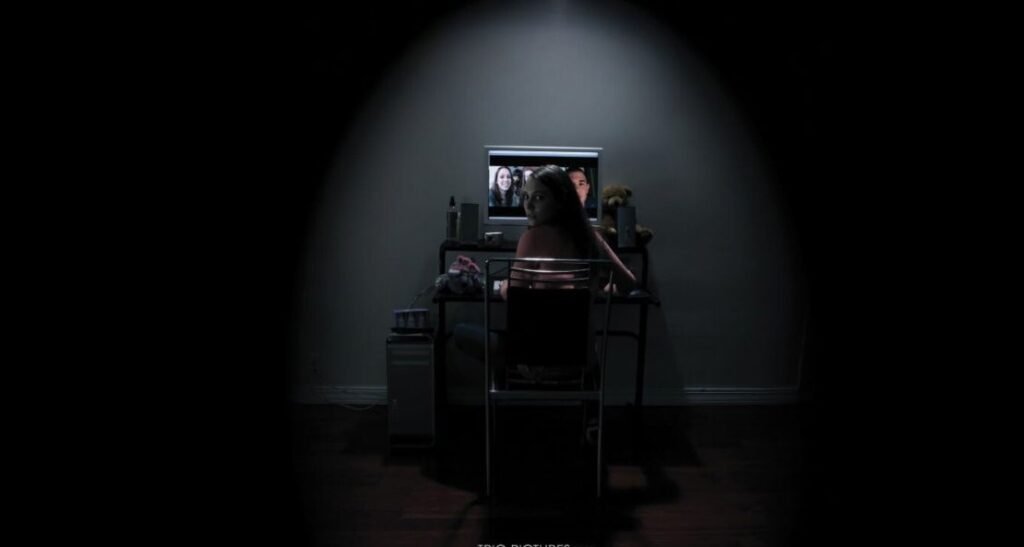Few films manage to crawl out of obscurity and become a viral sensation years after their release.
Megan Is Missing did just that—leaving behind a trail of traumatised viewers and heated debates.
Originally released in 2011, this found-footage horror film by Michael Goi combines teenage drama with gut-wrenching terror, delivering a story that feels uncomfortably close to real life.
Its resurgence on TikTok in 2020 turned it into a grim curiosity for a new generation, proving that some films, no matter how divisive, refuse to stay buried.
What Is Megan Is Missing About?

Megan Is Missing tells the fictional story of two teenage girls, Megan and Amy, who become victims of an online predator.
The film’s grainy, found-footage format adds an eerie realism as it chronicles Megan’s abduction and Amy’s attempt to find her.
But this isn’t just a missing-person drama—it’s a gut-wrenching descent into brutality.
By the time the infamous “barrel scene” arrives, viewers are either covering their eyes or questioning why they started watching in the first place.
Why Did Megan Is Missing Resurface on TikTok?
For nearly a decade, Megan Is Missing remained relatively obscure, dismissed by many as low-budget “torture porn.”
However, in 2020, it resurfaced in a way no one expected: TikTok. The hashtag #meganismissing racked up millions of views as users shared their reactions to the film’s most disturbing scenes.
It became a bizarre challenge—how much of the film could you endure?
And while some warned others to stay away, the morbid curiosity only added fuel to the fire.
Even Michael Goi, the film’s director, addressed its resurgence, urging viewers not to watch it alone or late at night.
He also issued a now-infamous warning about the “photo number one” scene: “You have about four seconds to shut off the film if you’re already freaking out.”
@itsheidiwong Movie: Megan Is Missing (2011) #movies #moviescene #psychological #horrormovie #horrortok ♬ Le Monde – From Talk to Me – Richard Carter
The Controversy: Necessary Warning or Exploitation?
Critics and audiences remain fiercely divided about Megan Is Missing. Some argue that its graphic depictions of violence and sexual abuse are unnecessarily exploitative.
New Zealand even banned the film, citing its portrayal of minors as harmful and “highly exploitative.”
Others, however, see the film as a brutally effective cautionary tale. Goi based the story on real-life cases of child abduction, intending it to serve as a wake-up call for parents and teenagers alike.
Yet, the graphic nature of the film has led many to question whether the ends justify the means.
For further context, explore the ethics of graphic depictions in film.
Why Are the Photos in Megan Is Missing So Controversial?
One of the film’s most infamous elements is its use of graphic “photos” depicting Megan’s torture and death.
These images mark a shocking tonal shift in the film, turning what feels like a teenage drama into something far darker.
Critics have described the images as both gratuitous and impactful, leaving audiences haunted long after the credits roll.
For Rachel Quinn, who played Megan, filming these scenes was a deeply unsettling experience.
She wore the same headgear depicted in the photos, which she later described as both physically and emotionally traumatising.
Goi’s insistence on realism extended to the makeup used for Megan’s corpse, designed to convey not just death but immense suffering.
Is Megan Is Missing Based on a True Story?
While Megan Is Missing is fictional, it’s inspired by real-life cases of child abduction.
Goi has stated that he wanted the film to reflect the dangers of online grooming and predation.
However, this has led to a recurring misconception that the events depicted in the film actually happened.
The found-footage style only adds to this confusion, blurring the line between fiction and reality.
Lessons for Parents and Teens: How to Stay Safe Online
If there’s one takeaway from Megan Is Missing, it’s the importance of online safety.
While the film’s graphic content may overshadow its message, it highlights real risks that parents and teens should address:
- Set Boundaries Online: Avoid sharing personal information with strangers and be cautious about meeting people in person.
- Recognise Red Flags: If someone refuses to share their identity or insists on meeting in private, it’s a warning sign.
- Communicate with Trusted Adults: Parents should create an environment where teens feel comfortable discussing online interactions.
For more tips, explore resources on online safety and grooming prevention.
The Legacy of Megan Is Missing: Awareness or Exploitation?
Over a decade later, Megan Is Missing remains a polarising film. Its supporters praise its unflinching portrayal of real-world dangers, while its detractors see it as exploitative and unnecessary.
Regardless of where you stand, the film has undeniably sparked conversations about online safety and the ethics of depicting violence in media.
And that, perhaps, is its greatest success—or failure. It depends on who’s watching.
FAQs
Q: What are the Megan Is Missing photos?
A: These are graphic, fictional images depicting Megan’s torture and death, presented as evidence within the film.
Q: Why is Megan Is Missing controversial?
A: Its explicit content, particularly involving minors, has been criticised as exploitative. The film was banned in New Zealand for its depictions of sexual violence.
Q: Is Megan Is Missing a true story?
A: No, but it is inspired by real-life cases of child abduction.
You might also like:
- 20 Best Documentaries of 2024: From Oscar Winners to Streaming Essentials
- The Best Horror Movies: Guaranteed Screams from the Scariest Classics to Modern Nightmares
- Unravelling the Mysteries: A Gripping Exploration of Cult Documentaries
- Discover 20 of The Best Psychological Thrillers of All Time
- Unveiling the Mystery of Siren Head: The Cryptid That Captured the Internet’s Imagination


